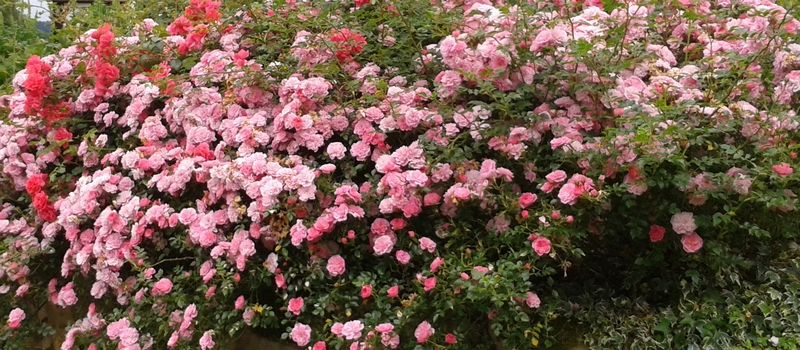Summer care for Roses
June must be the month for Roses and many will continue to flower right through until the autumn. Most gardeners who grow roses know that rose bushes are pruned in early spring but beyond that knowledge gets a bit thin! So what should we be doing to help our roses give the best display for the longest time?
 Well clearly any shrub or climber that is putting on vigorous growth and flowering repeatedly needs plenty of food and water. Roses are known as ‘hungry feeders’ and thrive best in deep, rich water retentive soil. Adding a mulch of compost or similar well-rotted organic matter around the base will help with both aspects. Once the first flush of flowers fades then a dose of a balanced fertiliser will promote continued flowering – in repeat-flowering varieties. And it is worth watering if it does not rain whilst they are flowering.
Well clearly any shrub or climber that is putting on vigorous growth and flowering repeatedly needs plenty of food and water. Roses are known as ‘hungry feeders’ and thrive best in deep, rich water retentive soil. Adding a mulch of compost or similar well-rotted organic matter around the base will help with both aspects. Once the first flush of flowers fades then a dose of a balanced fertiliser will promote continued flowering – in repeat-flowering varieties. And it is worth watering if it does not rain whilst they are flowering.
Deadheading is the action of cutting off the faded flowers to avoid energy going into producing seeds where these are not wanted. Whether any particular rose is deadheaded depends on two things. Firstly, is the variety repeat-flowering? This means exactly what it says – will the plant naturally produce flowers again and again through the summer? Most modern bush Roses do this and deadheading encourages them. Many climbing and rambling roses, along with some older bush roses and the Old fashioned shrub roses (with a thicket of stems) produce only one spectacular flush of flowers. Clearly it is more important to deadhead roses if this means that the plant will continue to flower.
The second question is whether the rose produces attractive rosehips, these are the fruits and contain seeds. Some roses, such as Rosa rugosa are valued as much for their huge red rosehips as the flowers. If you want rosehips then avoid deadheading. For repeat flowering roses you deadhead through the summer and just leave the last flush to set seed. I always take this opportunity to reduce the length of the stems, especially on vigorous modern roses, not just ship off the flower head. Like a mini-prune, cut back to a side shoot or bud, and this stops the shrub getting leggy by late summer.
If you enjoyed reading this blog why not receive my monthly newsletter direct to your email inbox with blogs, video tips and seasonal articles to inspire and inform. Sign up HERE.

